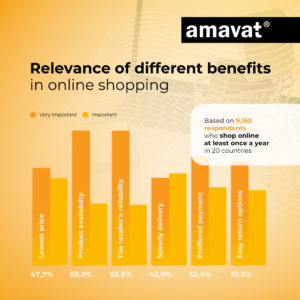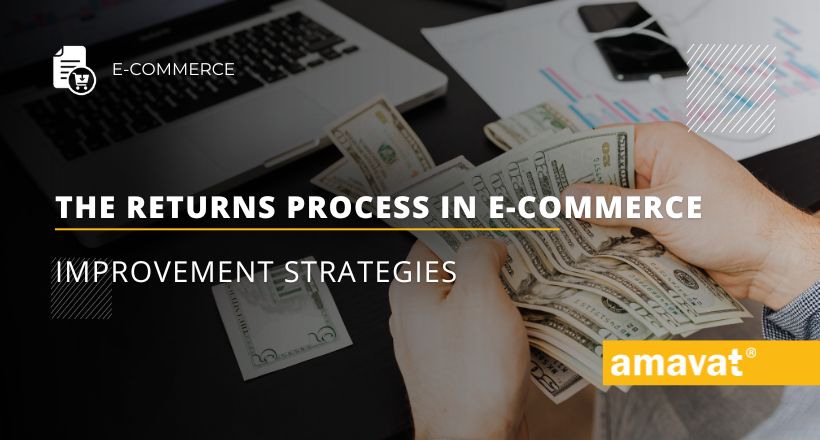How to improve the returns process in e-commerce?
In the e-commerce industry, the returns process plays a crucial role in building consumer trust and loyalty. According to the DeliveryX Returns 2024 report, 51% of consumers consider the ease of returns a very important aspect of shopping, regardless of whether it’s done online or offline. Furthermore, 67% of shoppers indicate that a retailer’s return policy affects the level of trust they have in them. So, how can retailers meet these expectations while managing the costs associated with returns?

Source: ConsumerX, based on responses from 9,165 people from 20 countries (aged 15-99), who shop online at least once a year, collected from August 2023 to May 2024.
Defining “ease of returns” from the consumer perspective
Determining what “ease of returns” means for consumers can be challenging for retailers. For some, ease may mean the ability to return an item to the nearest physical store, while for others, it could be a third-party location like a parcel locker. It is crucial that e-commerce packaging is easy to reseal, as 77.9% of consumers expect this. Convenient packaging is the first step to simplifying the returns process, which can significantly improve the shopping experience for customers.
Return costs – who pays?
The rising costs of handling returns have forced many retailers to introduce fees for this service. Since 2022, some retailers have started deducting return costs from the refunded amount. Research by ConsumerX shows that only 24% of consumers are willing to pay for returns, while 35% have never considered the financial impact of returns on online retailers. Retailers must balance charging fees with maintaining customer satisfaction. This may involve implementing clear and transparent return policies and educating consumers about the costs associated with returns.
Peak return periods – how to handle them?
During high-promotion periods such as Black Friday or Cyber Monday, the number of returns increases significantly. During these times, customers expect not only attractive prices but also additional services like free shipping (56%) and flexible return policies (44%). About one-third of retailers offer a seven-day return period, 27% offer 14 days, 28% offer 30 days, and 7% offer up to 90 days. Extending return periods during promotional periods can encourage consumers to make purchases but also lead to more returns after the promotions end.
Controlling the growth of returns
Returns in e-commerce increased by 15% year-on-year during the peak season of 2023, with the earliest returns occurring as early as Cyber Monday itself. Given that many retailers now charge for return logistics, 48% of all returns during the holiday season were paid. However, charging fees for returns does not deter consumers during the peak season. As a result, 40% of retailers are now considering shortening return periods during such busy times.
Strategies to improve the returns process
To meet consumer expectations while minimizing costs, e-commerce retailers can implement several strategies:
- Automated return systems: Implementing IT systems that automate the returns process can significantly simplify return management and reduce operational costs. These systems can automatically generate return labels, track return status, and process refunds.
- Clear return policy: A transparent and easily accessible return policy increases consumer trust and reduces the number of customer service inquiries. It is important for the policy to be visible on the website and easy to understand.
- Flexible return points: Offering the option to return goods at various locations, such as physical stores, partner points, or parcel lockers, increases consumer convenience.
- Better packaging: Investing in packaging that is easy to reseal and resistant to damage can significantly improve the consumer experience and reduce the number of damaged products in returns.
- Customer education: Informing customers about the costs of returns and their impact on the retailer can increase awareness and consumer responsibility. It is also worthwhile to promote shopping practices that reduce the number of returns, such as detailed product descriptions and realistic photos.
- Loyalty programs: Loyalty programs can be an excellent tool for managing returns. Offering special benefits, such as longer return periods for regular customers, can encourage consumers to shop more frequently and reduce the return rate. Additionally, these programs can help build long-term relationships with customers.
- Data analysis: Using data analysis to track and understand return patterns can provide valuable insights that help optimize processes. Data analysis can reveal which products are most frequently returned and why, allowing for appropriate changes in the offer or how products are presented.
- Customer support: Good customer support is crucial in the returns process. The support team should be well-trained and available to help customers with questions or issues related to returns. Good customer support can significantly reduce consumer frustration and improve their overall experience.
The future of returns in e-commerce
The e-commerce industry is constantly evolving, and consumer expectations are rising. Technology plays an increasingly important role in simplifying the returns process. Solutions such as smart packaging can revolutionize the way retailers manage returns. Additionally, the development of artificial intelligence (AI) can help predict consumer behavior and optimize return policies.
Summary
The returns process in e-commerce is a key element that influences customer satisfaction and loyalty. Retailers must balance making returns easy while managing costs. A clear return policy, flexible return points, process automation, and customer education can help achieve this goal. By doing so, retailers can not only increase consumer satisfaction but also optimize their logistics operations. As technology continues to advance, the returns process will become even more efficient and tailored to the needs of both retailers and consumers.
For any questions or additional information, feel free to contact our team of experts, ready to assist and support you: Contact us – amavat®.





